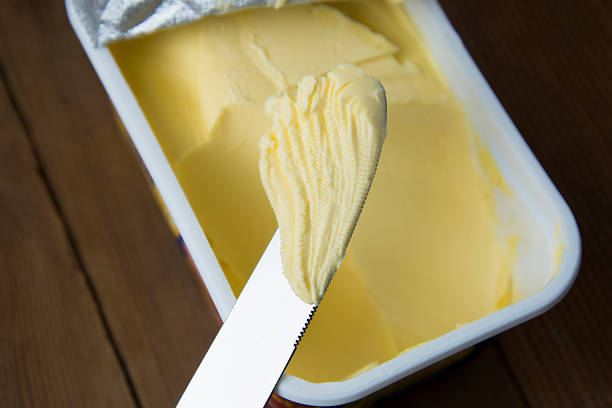The recent storm in a china teacup over the constituents of a National Trust scone has once more brought into sharp focus the contentious question of food substitutes, none more so than the use of margarine instead of butter. Margarine might now be firmly established in the British diet with some 9.4 million Britons classified as heavy users of the spread in 2020, but it has been the source of controversy for over a century and a half.
It all began when the French Emperor, Louis Napoleon III organized a competition to find a cheaper alternative to butter. Attracted by the substantial financial award on offer, the chemist, Hippolyte Mège-Mouriès, was the first to come up with a solution, producing in 1869 a spread made from beef tallow. To make it more palatable, he flavoured it with a small amount of milk.
He called his spread oleomargarine, a word created from the Latin for beef fat, oleum, and the Greek for a pearl, margaron, probably a reference to the pearlescent lustre of the spread. The latter may also have been a nod to the direction of an earlier French chemist, Michel-Eugène Chevreul, who, in 1813, had isolated a substance from animal fat that formed pearly drops which he called margaric acid. Although the German chemist, Wilhelm Heintz, had proven in 1853 that there was no such acid, Mège-Mouriès may have simply assumed that, as his spread used animal fats, it was full of Chevreul’s phantom acid.
Armed with a patent, Mège-Mouriès began to produce his new spread in earnest, but it proved to be a commercial failure. He sold his patent in 1871 to a Dutch company, Jurgens, later becoming part of the Unilever group, one of the world’s largest producers of margarine, another example of an inventor who failed to profit from his ingenuity and died in relative poverty.
News of Mège-Mouriès’ discovery soon spread across Europe, Benedict Klein establishing the first German margarine factory in Cologne in 1871. The Sunday Post, in its edition of January 6, 1935, reported on the jubilee celebrations at Craigmillar Creamery, then Scotland’s largest margarine factory. In his speech the managing director, a Mr Mackenzie, revealed that the first commercial shipment of margarine arrived in Britain in 1874. “It was not long after this”, the paper noted, “that the first manufacture of margarine started at Craigmillar”.
The United States was also an early and enthusiastic adopter of oleomargarine with at least thirty-seven companies manufacturing it by the late-19th century. Mark Twain gives us a flavour of the margarine boom in Life on the Mississippi (1883), when he allegedly overheard a businessman’s remarks. “ Why, we are turning out oleomargarine now by the thousands of tons”, he wrote, “And we can sell it so dirt cheap that the country has got to take it – can’t get around it, you see”.
Although animal fats were the principal ingredients of oleomargarine, two significant breakthroughs were made. First, New Yorker, Henry Bradley, developed and patented a process in 1871 which enabled vegetable oils, principally cottonseed oil, to be combined with animal fats. Then, in 1905, James Boyce and Paul Sabatier invented the hydrogenation process, allowing normally liquid vegetable oils to be hardened, making it easier to turn them into a butter substitute without the need for animal fats.
In the early decades of the 20th century, margarine was usually made from a combination of animal fats and vegetable oils. However, with shortages in the supply of animal fats becoming increasingly more frequent, their rationing, along with butter, during the Second World War, and improved manufacturing techniques using vegetable oils, by 1945, original animal fat-based margarine had all but disappeared along with the now redundant prefix, oleo-.
